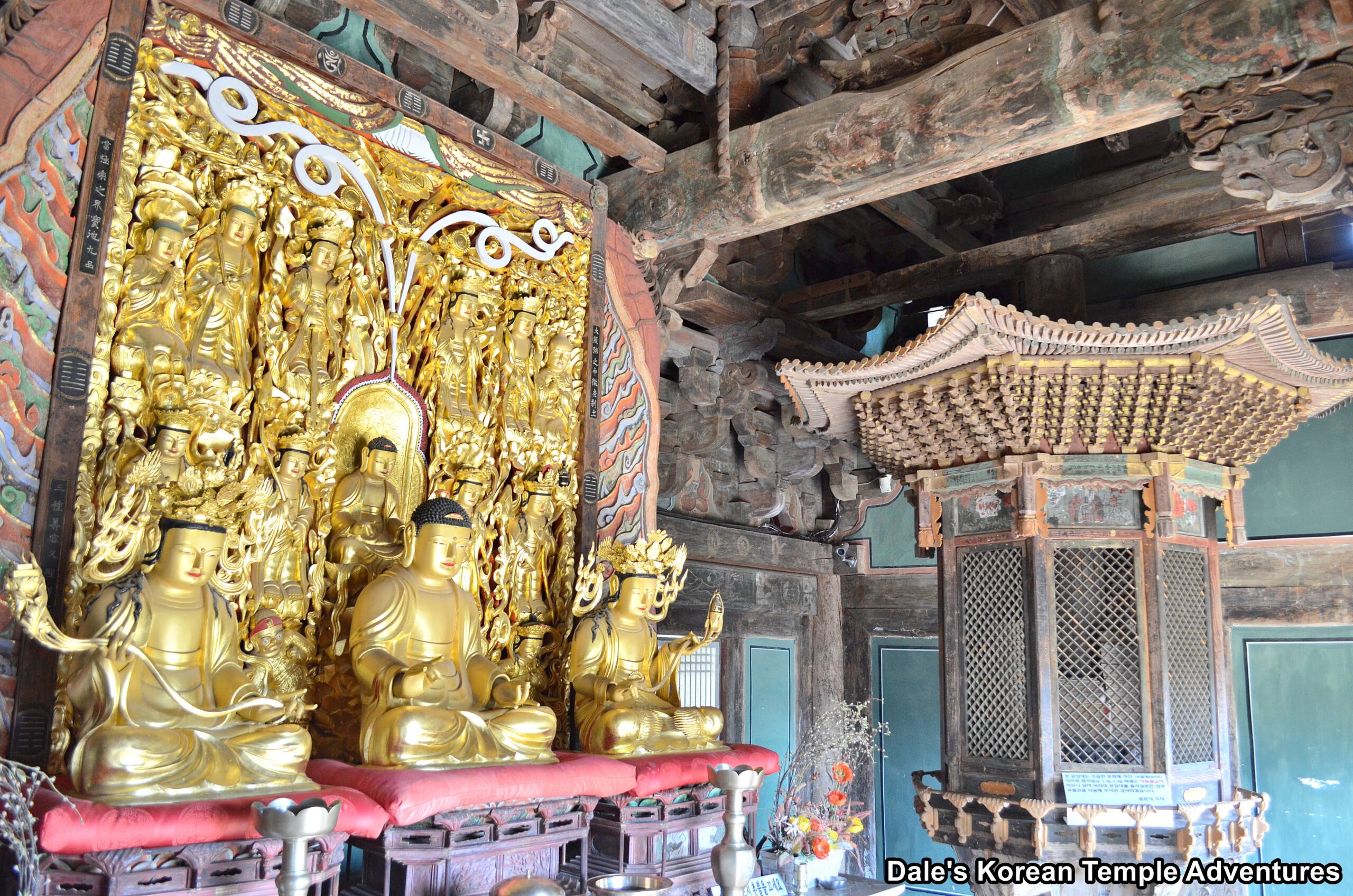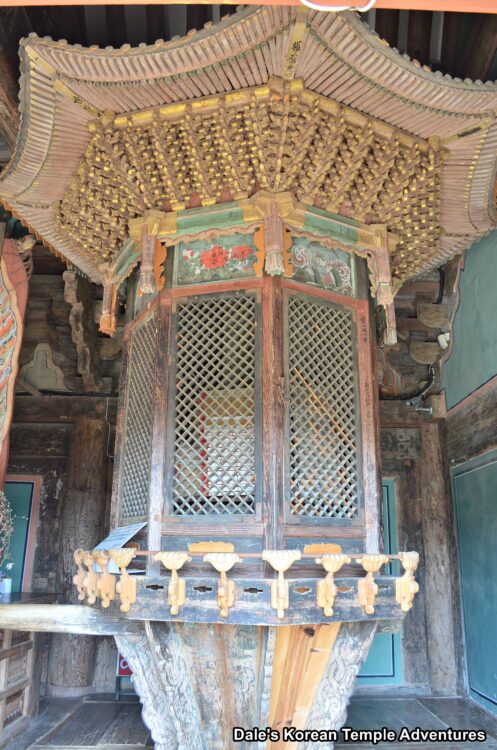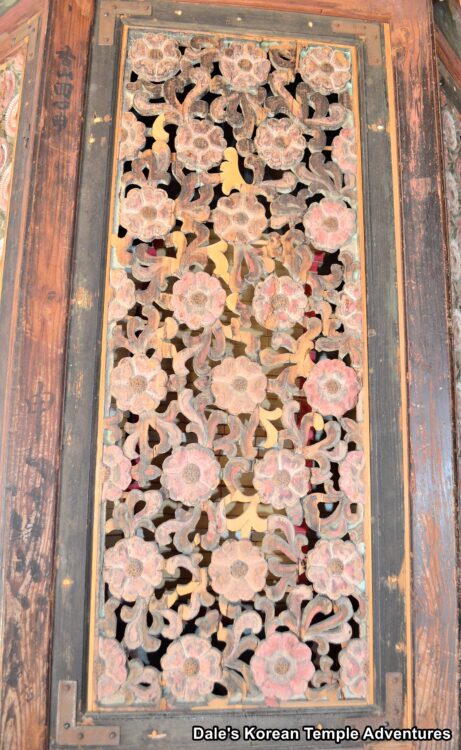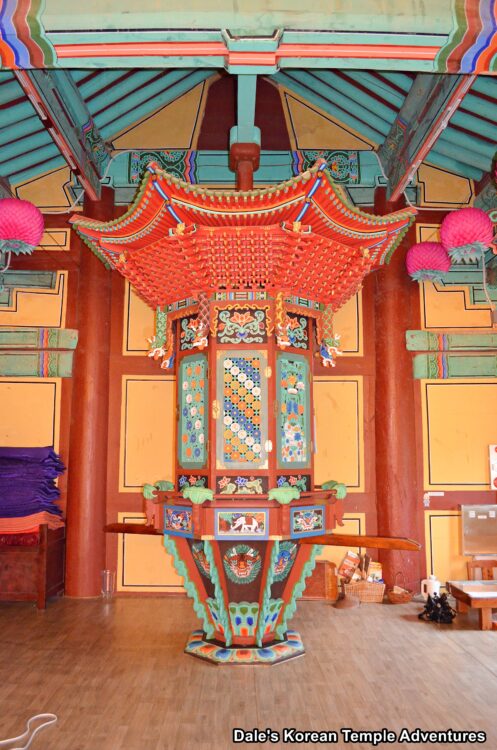Yunjangdae – Revolving Scriptures Library Pillar: 윤장대

Introduction
Perhaps the most obscure piece of artwork that you’ll find at a Korean Buddhist temple is the Yunjangdae, or “Revolving Scriptures Library Pillar.” In all of my travels, which now exceeds five hundred temples and hermitages, I’ve only encountered these beautiful libraries at three Korean Buddhist temples. So where can you find them? What do they look like? And why are they there?
Yunjangdae Design
The Yunjangdae, which is also known as a Jeonryunjang, is a colourfully painted library that houses Buddhist texts inside a wooden pillar. The Yunjangdae is rooted to the ground, but it has the ability to rotate caused by a spinning base. It can also be fastened to the ceiling with a spindle pillar, as well. The design of the Yunjangdae goes from narrow at the base to much broader near the top of the revolving pillar. Inside the body of the Yunjangdae, you’ll find multiple floral designed doors. And at the top of the Yunjangdae rests a bright red canopy. In addition to all this, the Yunjangdae can be adorned with dragons, Gwimyeon (Monster Masks), or even more flowers like lotus flowers and/or peonies.


Yunjangdae Purpose
The purpose behind the Yunjangdae is closely associated to what it houses inside it. Inside the body of the Yunjangdae, and housed on multiple bookshelves, are rows of Buddhist texts. It’s believed by Buddhists that if you turn the Yunjangdae, while attempting to receive good karma, that you’ll in fact attain it by pushing the Yunjangdae around. It’s believed that by spinning the Yunjangdae around just once that you’ve read the entire canon of Buddhist texts housed inside the Yunjangdae. This idea is similar to the one found in Vajrayana Buddhism (which is also known as Tantric or Esoteric Buddhism). This form of Buddhist practices can be found in the form of prayer wheels in Tibetan and Mongolian Buddhist beliefs, so it’s rather interesting that it takes the form of the Yunjangdae on the Korean peninsula.
Examples
Because the Yunjangdae is so obscure and hard to find, like I said previously, I’ve only ever seen them at three temples in Korea. The first, which is the most historically significant, and also a Korean National Treasure, are the pair of Yunjangdae found at Yongmunsa Temple in Yecheon, Gyeongsangbuk-do. Alongside the Daejang-jeon Hall that they’re housed in, the pair of Yunjangdae at Yongmunsa Temple are National Treasure #328. They were originally built in the hopes of overcoming a national crisis.
The two other examples can be found inside the Myeongbu-jeon Hall at Gapsa Temple in Gongju, Chungcheongnam-do. And the other modern example of a Yunjangdae can be found inside the Cheonwangmun Gate at Mihwangsa Temple in Haenam, Jeollanam-do.
